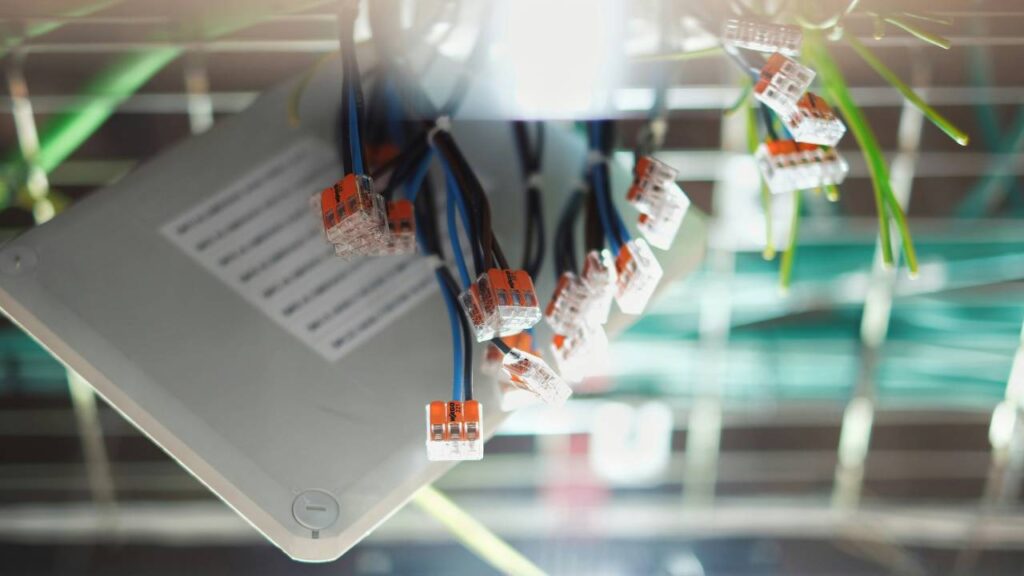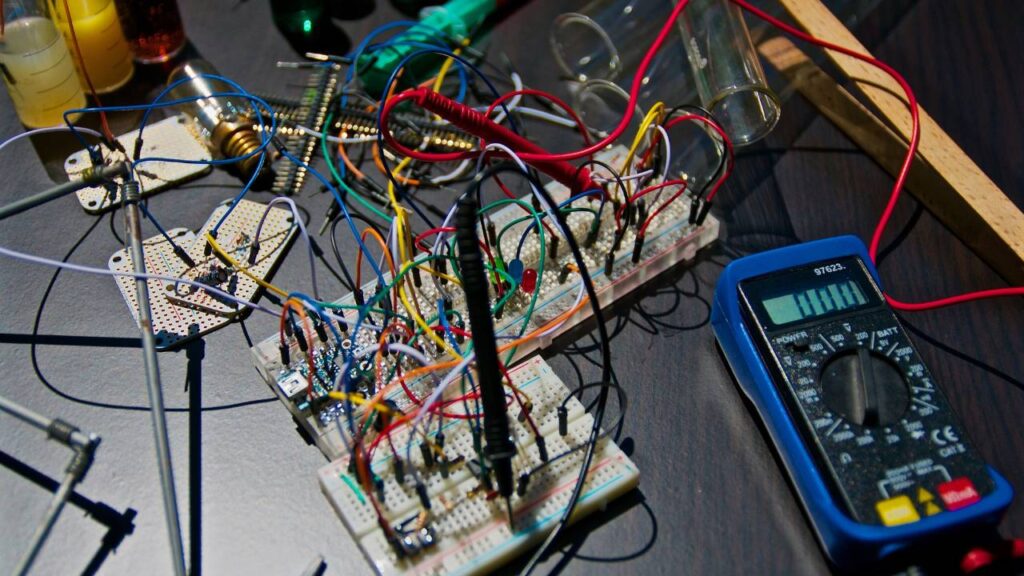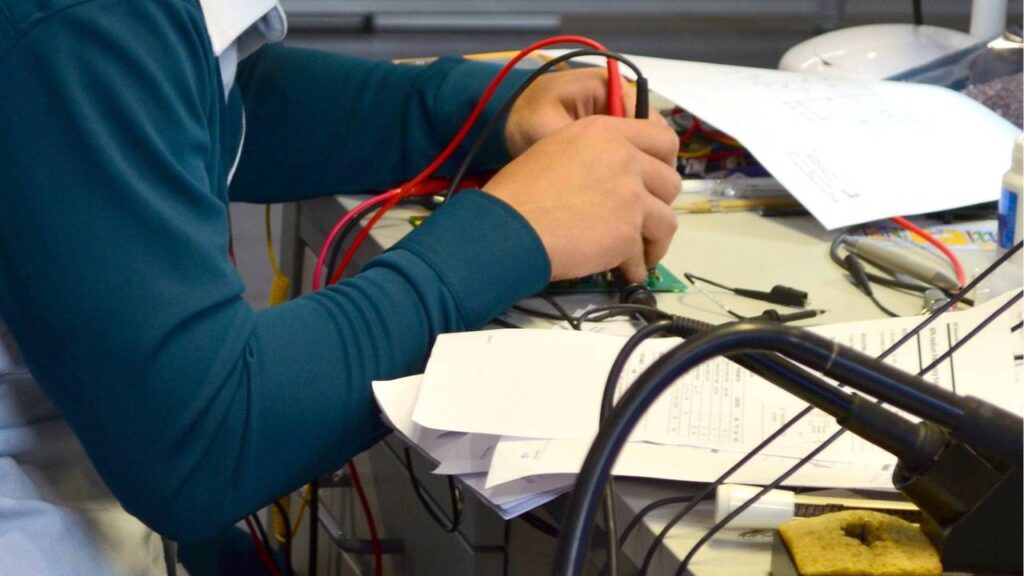While Irish businesses dedicate substantial resources to cybersecurity and data protection, many underestimate the importance of robust electrical infrastructure in preventing IT disasters. Electrical infrastructure failures are among the most frequent and avoidable causes of IT system outages, leading to prolonged downtime, data loss, and considerable financial harm. For any disaster recovery plan to be truly effective, businesses in Ireland must ensure that both digital systems and physical electrical networks are safeguarded, as reliable power is fundamental to operational continuity.
Understanding the Hidden Electrical Risks to IT Infrastructure

Electrical infrastructure failures pose significant risks to IT systems, many of which can go unnoticed until disruptions occur. Power surges, outages, and fluctuating voltages can all compromise servers, networking equipment, and storage solutions, resulting in downtime and potential data loss.
Modern IT environments are highly sensitive to changes in electricity supply. Even momentary losses of power or brief surges can cause unexpected shutdowns, system corruption, or even permanent hardware damage. Equipment such as data centres and communication systems are particularly affected, relying on continuous, stable power.
Grounding issues are another common but often overlooked threat. Poorly grounded electrical systems increase the risk of short circuits, equipment malfunctions, and even electrical fires, which may spread quickly in server rooms filled with electronic devices. This is especially concerning in older commercial properties, where electrical infrastructure may not meet current standards.
Irish businesses, in particular, face risks from the integration of state-of-the-art IT systems with ageing electrical installations. Many historical buildings were not designed for the demands of modern technology, leading to compatibility challenges and elevated risk of electrical faults. Additionally, as power grids become increasingly digitised, cybersecurity vulnerabilities in electrical infrastructure present new risks that businesses must consider. The interconnected design of both electrical and IT systems means that a single failure can rapidly affect multiple layers of IT infrastructure.
The reliance on clean and uninterrupted power highlights why thorough electrical assessments and regular maintenance are essential measures. Without proactive attention, businesses may struggle with not only disruption but also the potential for extended outages and increased repair costs.
Common Electrical Failure Points That Threaten Business Continuity
Distribution boards are essential hubs within any facility’s electrical network. Inadequate maintenance or ageing components can cause circuit overloads, tripped breakers, or even fire risks, sometimes going unnoticed until a sudden outage disrupts operations.
Uninterruptible power supplies (UPS) are relied upon to shield servers and network equipment during power disturbances. If UPS units are neglected or not routinely tested, batteries may degrade, leaving systems unprotected during outages or voltage fluctuations.
Backup generators are often installed to ensure essential functions continue during prolonged outages. Failure to perform regular load tests, fuel checks, or servicing can lead to generators failing to start when needed most, leaving businesses exposed.
Electrical connections to critical IT equipment, such as server racks and networking units, must be inspected for wear, loose fittings, or corrosion. Poor quality wiring or ill-fitted connections introduce the risk of overheating, intermittent faults, and data loss.
In Ireland, fluctuating grid stability and severe weather events like storms or flooding increase the risk of electrical disturbances. Moisture ingress, lightning strikes, and salt-laden coastal air can accelerate deterioration of electrical components, especially in exposed or older buildings.
Many businesses experience avoidable outages due to insufficient maintenance and neglecting electrical safety protocols. A consistent approach to inspections and preventative action is necessary to minimise these vulnerabilities and maintain business continuity.
Electrical Infrastructure Assessment and Risk Evaluation Methods

A thorough assessment of electrical infrastructure is fundamental to effective IT disaster recovery planning for Irish businesses. Assessments typically commence with an examination of electrical load requirements to determine whether existing systems meet the operational demands of IT equipment. Understanding these capacities is essential to anticipate potential risks and prevent system overloads.
Analysing power quality forms another critical step. Businesses must review voltage stability, frequency fluctuations, and susceptibility to electrical noise that can disrupt sensitive IT systems. Periodic testing ensures that unexpected disturbances do not place critical technologies at risk.
Evaluating the physical condition of electrical components, such as switchgear, distribution boards, and cabling, is vital. Regular inspections help to uncover signs of degradation or wear that might lead to infrastructure failures.
Documenting the detailed layout and capabilities of all electrical systems should not be overlooked. Precise documentation enables rapid identification of vulnerabilities, including single points of failure that could halt essential business operations.
Mapping out all dependencies between IT systems and their power sources is also necessary. This process reveals hidden risks and clarifies which systems require priority protection in the event of electrical failure. By systematically assessing and recording these factors, businesses gain a realistic understanding of their risk profile and can prioritise improvements to strengthen resilience.
Backup Power Systems and Electrical Redundancy Planning
The integration of backup power systems is crucial for Irish businesses that depend on uninterrupted electricity. Solutions typically involve uninterruptible power supplies (UPS), standby generators, and well-designed electrical switching systems to minimise disruptions.
When implementing these systems, it is essential to assess the business’s power needs and size the backup units correctly. Undersized configurations may leave essential equipment unprotected, while oversized systems can lead to unnecessary costs and operational inefficiencies.
A key element of electrical redundancy planning is the deployment of automatic transfer switches (ATS). These switches enable seamless transition between mains power and backup sources, reducing the risk of downtime. Businesses may also utilise load shedding protocols, prioritising critical loads during extended outages to conserve resources and maintain vital operations.
A key element of electrical redundancy planning is the deployment of automatic transfer switches (ATS). These switches enable seamless transition between mains power and backup sources, reducing the risk of downtime. Businesses may also utilise load shedding protocols, prioritising critical loads during extended outages to conserve resources and maintain vital operations.
Setting up a safe IT infrastructure requires comprehensive planning that addresses both primary and backup power systems from the design phase. Backup systems require regular testing and maintenance to ensure reliability. Scheduled tests, such as monthly generator start-ups and periodic UPS load tests, help identify potential faults before they affect business continuity. Detailed maintenance logs and periodic reviews of backup infrastructure support compliance and long-term reliability.
Coordinating multiple backup sources, such as integrating UPS units with generators, demands careful planning. Safety mechanisms must be in place to prevent backfeeding and electrical hazards. Proper system design, robust switching devices, and clearly defined operational protocols help mitigate risks associated with electrical redundancy while supporting seamless IT functionality during power disruptions.
Integration with Overall IT Disaster Recovery Strategies

Effective IT disaster recovery plans rely on robust electrical infrastructure. Reliable power is essential for maintaining data backup processes, system redundancy, and the smooth functioning of business continuity solutions. Without it, even the best IT strategies can fail during critical incidents.
Close coordination between IT teams and electrical contractors is necessary during planning and implementation phases. This ensures both digital and physical systems are aligned and potential failure points are addressed from the outset.
Regular testing is essential to validate that backup power systems work seamlessly with IT systems. Simulated power outages help verify that failover procedures for both infrastructure and technology operate as expected.
Proper documentation of all electrical and IT responses should be maintained. This assists with troubleshooting, continuous improvement, and compliance with regulatory requirements.
For organisations looking to prepare for unexpected infrastructure failures, conducting a substation safety audit as part of risk assessment processes is vital. Identifying electrical vulnerabilities helps prevent outages and assures that infrastructure can meet recovery time objectives set by the IT disaster recovery strategy.
Conclusion
Electrical infrastructure failures continue to be a critical yet frequently underestimated threat to the stability of IT systems and business continuity in Ireland. An effective disaster recovery strategy requires attention not only to digital safeguards but also to the physical vulnerabilities inherent in power supply and distribution. By prioritising electrical safety as the backbone of IT resilience, businesses can better protect their operations and investments. Irish organisations are urged to include thorough assessments of their electrical systems within their disaster recovery planning to safeguard their essential services and minimise disruption during unforeseen events.
